Massive X vs Serum | Which is right for YOU? (2022 Comparison)
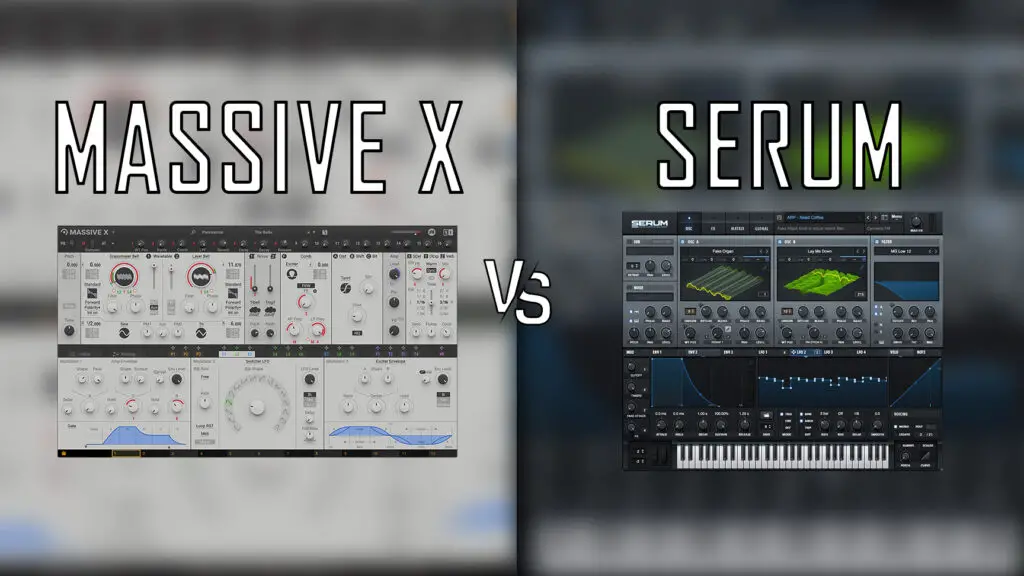
In this guide we’ll take a look at which of the two most popular VST instruments is right for you: Massive X vs Serum.
Massive X and Serum are easily two of the most acclaimed, well renowned VST software synths on the market today.
If you mention wavetable synthesizers around most producers, the first name you’ll probably hear is Native Instruments’ Massive: the hugely popular VST instrument capable of an enormous scope of electronic sounds. This heavyweight soft synth is insanely powerful, and was the leading wavetable plugin. For many years, nothing else even came close.
Then came Serum.
Serum is a stunningly versatile, highly creative wavetable synthesizer with an uncompromising workflow and a truly high-quality sound. Like Massive, it is capable of creating virtually any electronic sound imaginable while also being relatively easy to use and understand.
But in 2022, with the release of Native Instruments’ Massive X, which plugin ultimately comes out on top?
Massive X Vs Serum: Is there a clear winner?
In my opinion, no. I wouldn’t say one plugin is objectively way better than the other.
However, each one is undoubtedly better suited for certain styles of production and sound design.
Below we’ll take a look at the main factors you should consider when comparing these two leading soft synthesizer powerhouses.
Massive X vs Serum: Price
For a lot of producers, price will definitely be a huge factor when it comes to comparing these two plugins. Plugins with this level of power and creative versatility are definitely not cheap, so be prepared to pay.
However, it’s important to remember: a heavyweight plugin such as Massive X or Serum may become an integral part of your production for years. Therefore, it’s important to view these plugins as investments.
If you have the money, I wouldn’t buy the cheaper plugin purely because it’s cheaper, as it may turn out another plugin was substantially better suited to your style of production.
As of today, Massive X is priced at $199.00 while Serum is priced at $189.00, so there’s not much in it anyway.
Although both these plugins often have deals or discounts, so it’s worth checking out the current price. They also both have an available free trial download, so you can actually test both products before making a final decision.
Click here to find the current price for Massive X.
Click here to find the best price for Serum.
Massive X vs Serum: Layout / Ease of Use
First, I want to take a look at the layout and design of the plugin interfaces.
It’s probable you will spend hours (if not days!) inside your main plugin, so it’s important that everything is presented with an intuitive layout that allows for a fast-paced workflow.
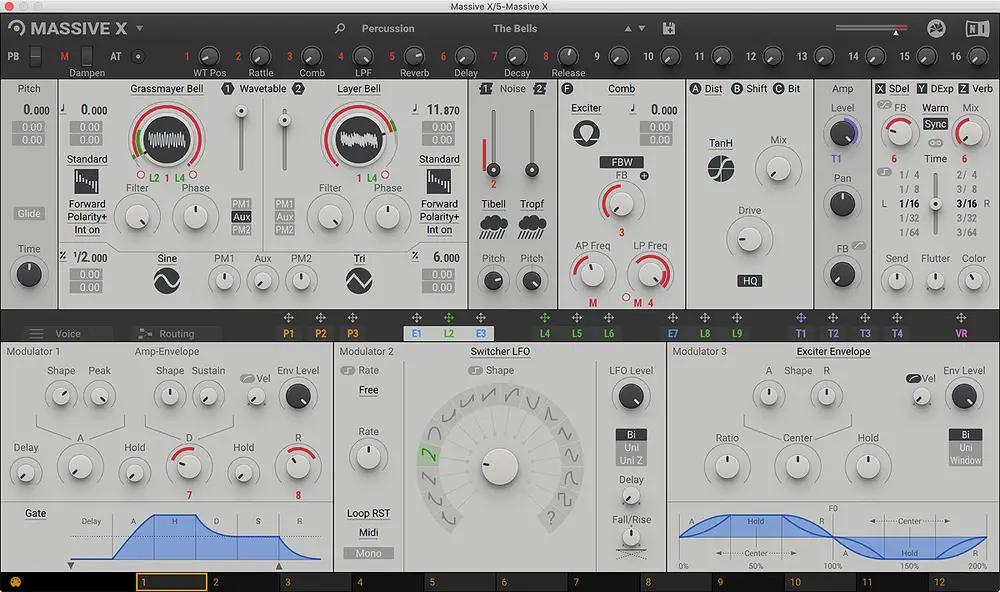
Massive X Layout
When compared to it’s predecessor, Massive X has a very futuristic, sleek design and is genuinely one of the aesthetically impressive plugins out there.
However, look aren’t everything.
Massive is designed to fit the majority of it’s features into one view, so it can seem very overwhelming for a beginner. I’d say even advanced producers may struggle to get their head round this plugin to begin with.
The text is relatively small, yet the knobs and controls are somewhat “spread out” across the interface, making this soft synth a little hard to navigate at first.
However, after this fairly steep learning curve, the pieces do fall into place. With a little practice (and more importantly, patience), the layout starts to make a lot more sense. Massive X allows for a very fast, streamlined workflow, you just have to put in the work to get there.
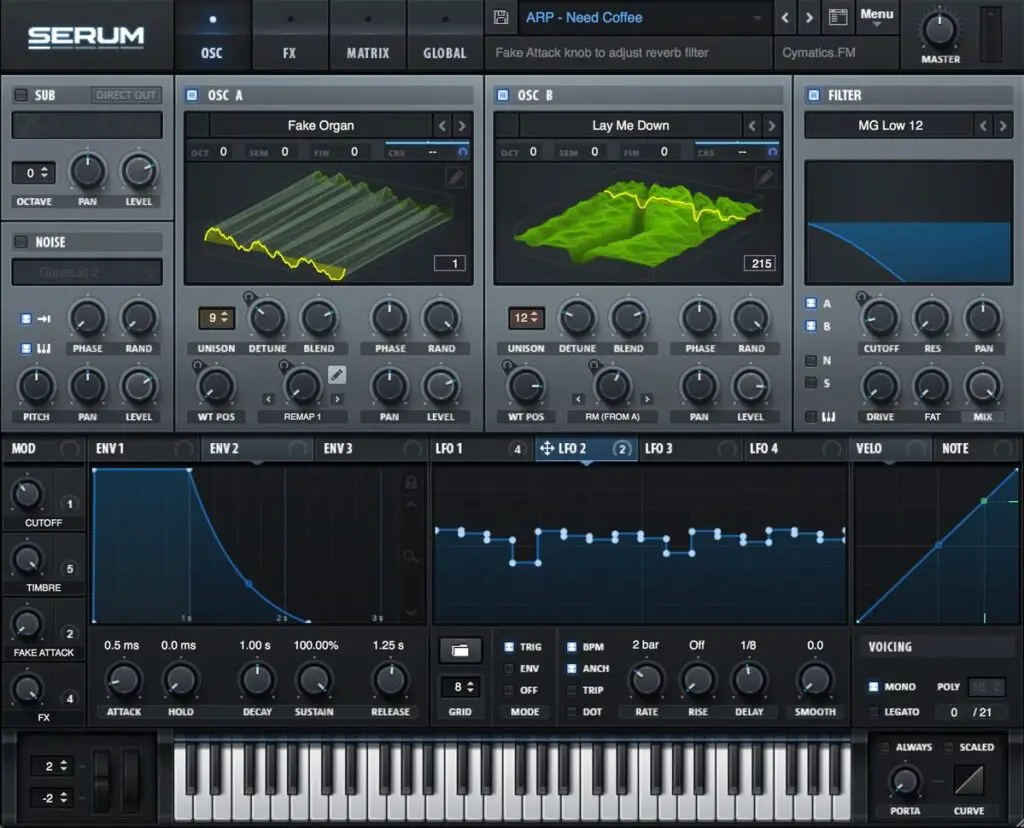
Serum Layout
Creating sounds with wavetable synthesis is an incredible skill to learn, but in order to get good at it, it definitely requires a lot of work.
Since the release of Serum in 2014, I’ve always been blown away by how easy and intuitive this plugin’s engine is to use. From the get go, every control in Serum feels like it’s exactly where it should be, which results in a much easier learning curve than Massive X.
This is one reason why I usually recommend Serum to complete beginners to music production and sound design.
Also, Serum has a rigid, almost sci-fi appearance with gorgeous 3D oscillator waveform visualizers, making these plugin an absolute joy to use from the get-go.
The winner?
In terms of layout and ease of use, Serum definitely takes the cake on this one. Massive X may have you scratching your head at first, but with Serum it’s easier to dive right into the various controls and modulation features. Although once your over the learning curves, both these plugins provide an excellent workflow with little creative distractions.
Massive X vs Serum: The Sound
For many producers, this will be the most crucial factor when it comes to comparing these two plugins.
Granted, you might have the best looking plugin, or the plugin with more modulation options etc. but that means nothing if it doesn’t have the right sound you’re looking for.
Firstly, neither Massive X or Serum sound objectively better than the other, but they do sound different.
Tonal differences?
When Serum was released, one of the things that drew both praise and criticism was how clean and “untouched” the sound output was.
Serum produces the exact sound you’ve told it to create, which has it’s pros and cons. This does mean that you get pristine sounding synths, and can hear exactly what the wavetables are producing. However, in some cases, it does mean you may have to get a little more technical to make a sound actually sound great.
Massive X on the other hand is known for creating fat, rich tones on the fly. I’d go as far to say it has more of an analog tone, which is heavily sought out for many electronic producers. This sometimes means a sound in Massive X can sound great without much customization or advanced sound design.
Please note: These tonal differences aren’t huge, but it’s definitely a comparison noted by myself and many producers in the production community.
Which plugins sounds best for which genre?
The original Massive plugin was heavily associated with dubstep genres back in the early 2010’s, which artists such as Skrillex singing it’s praised. Granted, with it’s various “modern talking” and other vocal style oscillators, it was perfect for creating those growling basslines and huge, evolving synths often found in dubstep music.
In my opinion, Massive X is still better suited for creating that style of synth or bass sound that Serum. This is not only down to the rich tone of the plugin, but also the selection of presets and oscillator options. Creating a “dirty” bass sound in Massive X will most likely give the best results.
Serum however, is absolutely brilliant at creating lush, spacious pads, clean basses, evolving future bass synths (although Massive X would also be great at this) and much more. Like I said, creating a rich, anolog tone is still possible, but may take a few extra tweaks.
The Winner?
As you may have guessed, there’s no winner in terms of how these plugins sound. It’s all about personal preference, and whether you’re after a more untouched, clean sound or a richer tone.
Massive X vs Serum: Features
Now let’s take a closer look at specific features and sections of the Massive X and Serum engines and how they compare.
The Oscillators
Both these plugins have two independent wavetable oscillators. I’ve covered the sound differences between the oscillator, but something definitely worth mentioning here is the wavetable options.
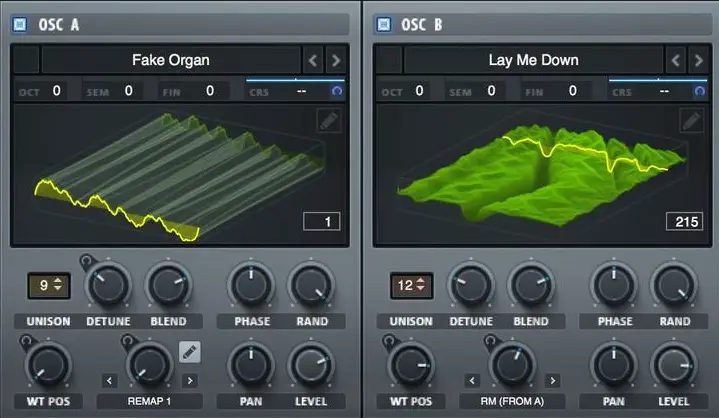
One of the most powerful features of Serum is the ability to import your own custom wavetables. This can be done through imported audio, third-party wavetables or simply drawing them in yourself.
This leads to a staggering amount of creative possibilities.
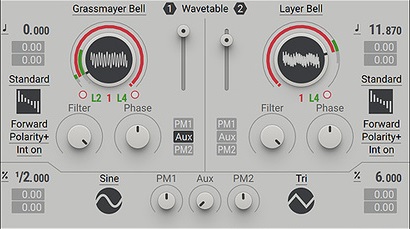
Unfortunately, neither Massive or Massive X provide this feature. Even worse for Massive, there’s even a third-party download out there somewhere that gives you all the Massive wavetables, and makes them available in Serum.
So by default, Serum’s oscillators do give more creative options than Massive X’s.
Serum also provides gorgeous 3D models of your wavetables, and as you scroll through the wavetable position, you can actually see exactly where you are within the wavetable. This allows you to accurately visualise the sound you’re creating in real time, which is incredibly useful.
Modulation
Without a doubt, both these synths are modulation powerhouses. The envelope and LFO options in both these plugins are very extensive and sound genuinely incredible.
To give you a rundown:

Massive X has 9 independent, customizable LFO/Envelope options, which can each be set to a modulation envelope, an exciter envelope, a switcher LFO or a random LFO. I won’t go through each of these here, but these modulation options allow you to get really creative, and create some truly unique sounds.

In contrast, Serum has 3 fixed envelopes and 4 LFOs (which can expand to 8) and only has 1 type of envelope and LFO. You still get a ton of creative potential here, but Massive X definitely takes the cake in terms of the versatility of it’s modulation features.
Effects
Effects are a crucial part of a synth engine, particularly a powerhouse like Massive X or Serum.
If you can decrease the amount of additional VST effects you need to add to a sound by adding them within the synth itself, this gives you a huge advantage.
Luckily for us, both these synths come with a fantastic variety of on-board effects.
Serum effects:
| Serum Effects | Massive X Effects |
|---|---|
| • Hyper/Dimension | • Anima |
| • Distortion | • Bit Crusher |
| • Flanger | • Utility |
| • Phaser | • Folder |
| • Chorus | • Freq Shifter |
| • Delay | • Distortion |
| • Compressor | • OSC |
| • Reverb | • PM OSC |
| • EQ | • Ring Mod |
| • Filter | • Sample + Hold |
| • Track Delay | |
| • Dimension Expander | |
| • Equalizer | |
| • Flanger | |
| • Nonlinear Lab | |
| • Phaser | |
| • Quad Chorus | |
| • Reverb | |
| • Stereo Delay | |
| • Stereo Expander |
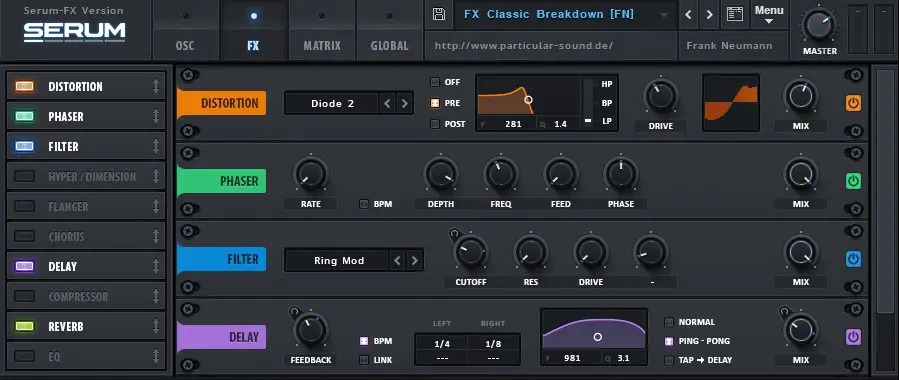
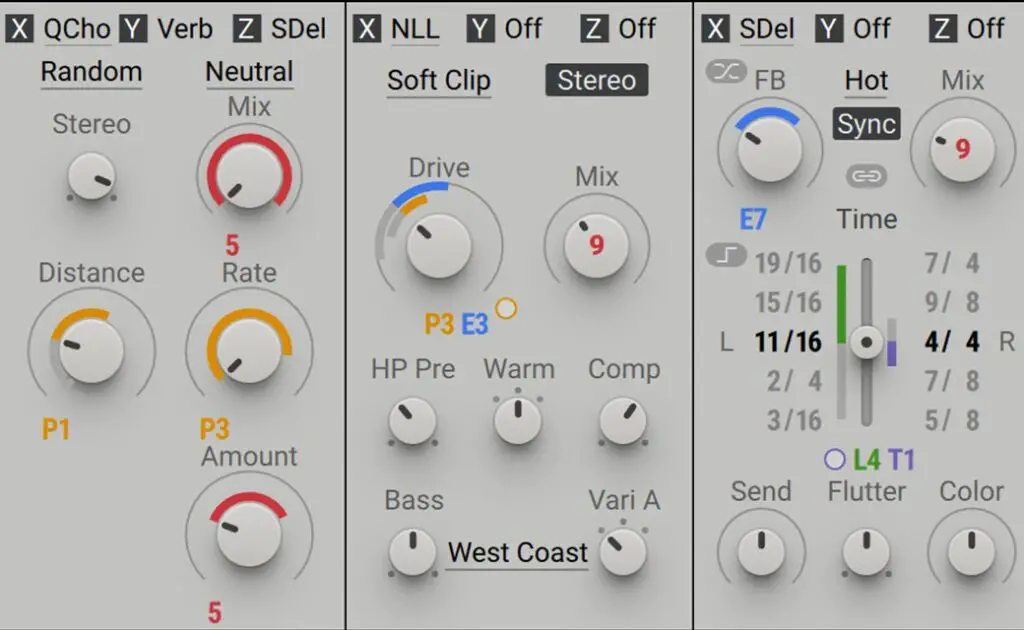
As you can see, Massive X has a substantial amount of effects when compared to Serum. However, it’s worth mentioning Serum has more slots to insert effects, and alot of the effects in Serum have more individual controls than their Massive X equivalent.
In terms of the on-board effects, I don’t know if there’s a clear winner here. Obviously, Massive X gives you way more options, and the effects themselves sound stunning. However, Serum gives more precision and customization within each effect.
Massive X vs Serum: CPU
It has to be said, Serum is far from light on CPU. Massive X has a notably quicker GUI even with the stunning new interface.
The CPU is Serum has been a talking point since it’s release in 2014, and it’s definitely noticeable. I’d strongly recommending trying the free trial before you buy to see if your current system can handle multiple loadings of Serum.
To conclude…
Clearly, neither plugin runs away with the trophy here. In my personal opinion, I prefer Serum mainly for it’s powerful wavetable functionality and the ability to import custom wavetables. I also prefer the layout and the clear, crystalline sound. But I don’t see it as an objectively better plugin, as Massive X has many incredible features that Serum doesn’t do quite as well (CPU, Modulation etc).
Go for Massive X if you:
• Want a distinctive, rich, anolog tone
• Are looking to create harsher music genres such as dubstep
• Want the most modulation options possible
Go for Serum if you:
• Want an untouched, pristine sound output
• More detailed effect options
• An easier to understand, intuitive interface
• Extensive wavetable customization options
Massive X vs Serum: Similar Articles
How to use Serum (For Beginners)
The 5 Best VST Plugins for Beginners

